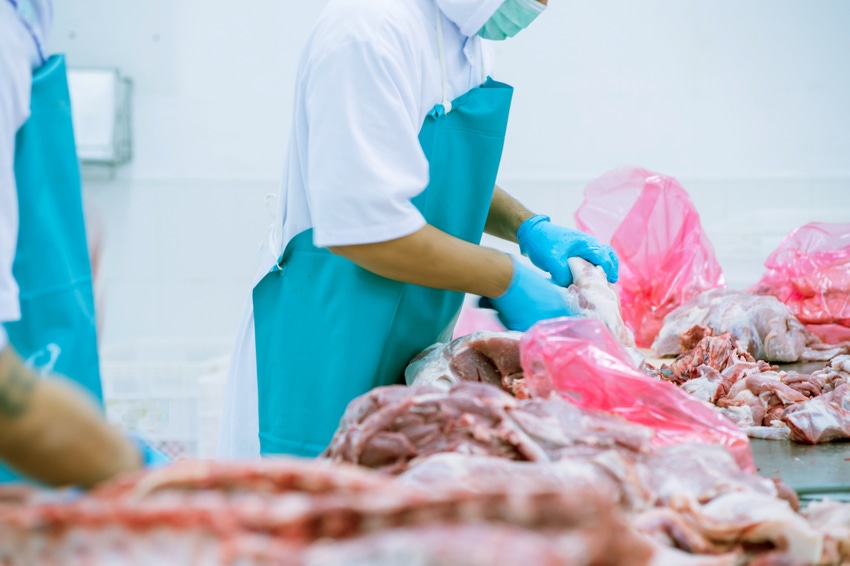Delayed animal sales, heavier weights and lower prices will continue to affect producers in particular.

Across the cattle, swine, and broiler sectors, processing facilities are operating at more than 95% of their average capacity compared to this time last year, Agriculture Secretary Sonny Perdue said Tuesday.
Beef facilities are operating at 98%, pork facilities are operating at 95% and poultry facilities are operating at 98% of their capacity compared to the same time last year, the U.S. Department of Agriculture reported.
Josh Maples, agricultural economist and assistant professor at Mississippi State University, noted during a recent webinar that beef processing at its lowest point during the COVID-19 pandemic was 35% below year-ago levels, and pork capacity was also 35% below 2019 levels. Broiler capacity was 6% lower, which equates to a decline of about 20 million birds.
USDA said it has been working around the clock, in conjunction with the Centers for Disease Control & Prevention, the U.S. Department of Labor’s Occupational Safety & Health Administration (OSHA) and state and local health officials to ensure that a safe and stable supply of protein is available for American consumers while also keeping meat facility employees safe.
USDA further noted that the safe resumption of operations followed President Donald Trump’s Executive Order directing the facilities to implement the CDC and OSHA guidelines created specifically for the meat and poultry sector response to the COVID-19 pandemic.
“President Trump took decisive action to ensure America’s meat packing facilities reopen in a safe way to ensure America’s producers and ranchers will be able to bring their product to market,” Perdue said. “I want to thank the patriotic and heroic meat packing facility workers, the companies and the local authorities for quickly getting their operations back up and running and for providing a great meat selection once again to the millions of Americans who depend on them for food."
Kenny Burdine, agricultural economist and associate extension professor at the University of Kentucky, also said during the webinar that the U.S. began 2020 with a lot of livestock to work through the system and fairly low unemployment -- two things that probably made the sector vulnerable.
“The sector was dealt a pretty tough blow,” Burdine said. “On the same note, I have to point to the fact that with all of the things that have been put into place, we’ve really ratcheted processing and production up very quickly in the last few weeks, which I found very encouraging.”
Despite the recovery, the processing challenges led to delayed animal sales, heavier weights at a time when they typically decline and lower prices that will continue to affect the sectors, particularly producers, for some time.
“The effect is just not at that end animal production stage, when they’re about to be turned into meat; it really filters all the way back up the supply chain to the original producer,” Maples said.
One positive, he pointed out, is that the U.S. already had a lot of meat supplies at the beginning of the year, and 2020 was expected to be a large production year for many of the animal proteins. Still, producer margins were already slim prior to COVID-19, and the impacts of the pandemic will likely be around for the longer term.
Euthanasia did occur in the hog sector and broiler sector, but Maples said this will not have an impact on supply later on, especially since the U.S. had a lot of hogs before COVID-19 took hold.
In fact, Kansas State University agricultural economist and professor Glynn Tonsor noted during the webinar that there was concern pre-COVID-19 that there were going to be more animals to process than U.S. capacity could handle.
“There’s always this management of the number of animals trying to getting into the processing sector,” he said.
On the hog side, there was a buffer zone in the volume and the number of animals at the beginning of 2020 that is going to assure that the U.S. has large volumes of pork produced, he said.
About the Author(s)
You May Also Like





